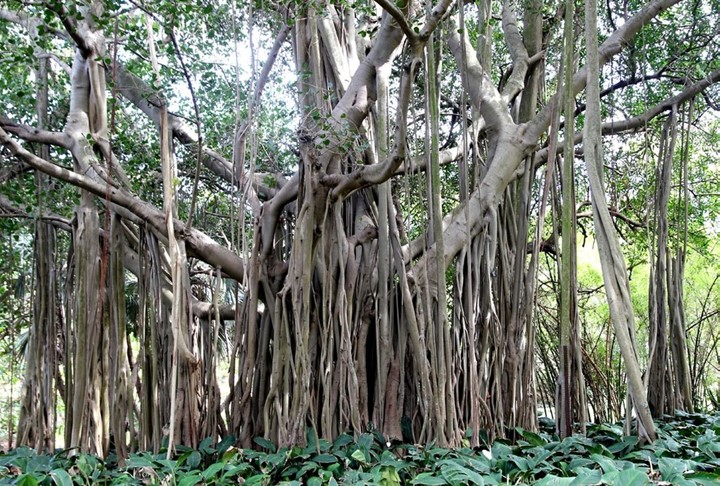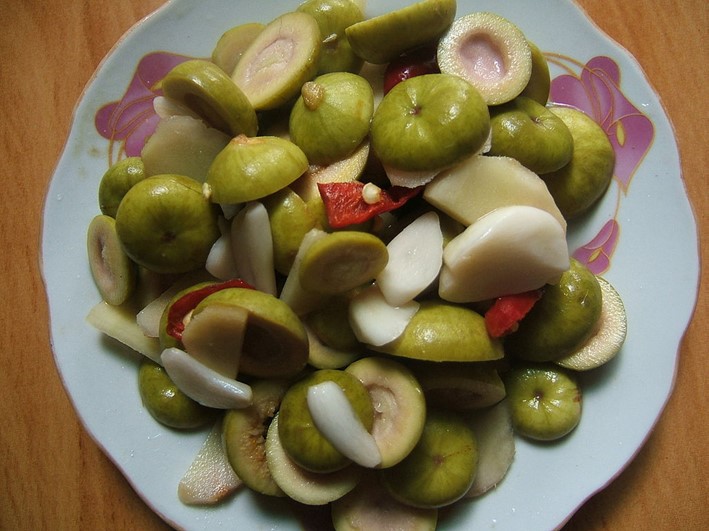The fig is the edible fruit of a small species of a flowering tree in the family of Moraceae. It’s native to Western Asia and made its way to the Mediterranean in ancient times. Ancient people cultivated and grew Fig trees as an ornamental plant and food. In India, they call it the Banyan Tree or Indian Fig Tree. The tree is woven into their mythology and considered as sacred. People commonly refer to it as Ficus benghalensis or Ficus racemosa.

Contents
Contents
Varieties of Indian Fig Tree
Ficus Benghalensis
Ficus Benghalensis is the Indian National Tree. People usually call this Banyan species as Banyan fig or East Indian Banyan tree, naturally grown in the Indian Subcontinent. The tree belongs to the Moraceae family and the Ficus genus, named after the Hindu trader who favored the tree, called the Banyans.
People have cultivated it widely in the tropical and rainforests areas of the world. The tree is evergreen which is resistant to aridity and cold weather. The tree starts to grow as an epiphyte inclining on another tree that will soon be strangled and suffocated. Hence, people called it as the strangler fig. It is a fast-growing tree that can grow up to 200 meters and spread up to 30 meters.
Ficus Racemosa
Ficus racemosa is a deciduous tree that grows about 16 meters, commonly known as the cluster fig tree. People call it as the Indian fig tree or Gular in the local language. The tree belongs to the Moraceae- Mulberry family, in genus Ficus L.-fig. It has green-colored leaves that grow near its trunk. The oval-shaped fruit is edible. It is green in color when young, then becomes orange as it ripens.
The tree has great significance in Indian culture, specifically in their religion. People consider it sacred in Hindu and Buddhist religions. Some of their temples and yoga wells have Ficus racemosa nearby.
The Indian Fig Tree Characteristics
Indian fig trees are native to Asia and survive in tropical or subtropical countries. The Indian fig trees are epiphytes, which means they can survive without being attached to the ground. They get nutrients from leaves and other debris material of another plant that later strangled and suffocated. Here are some of its physical attributes:
- Growth form – it usually grows up to 30 meters tall and spreads widely. The tree produces aerial roots, which later turn to woody trunks.
- Leaves- its leaves are large, leathery, glossy, green, and elliptical.
- Fruits- spherical shaped, measuring about 1-2.5 cm in diameter, which become orange to red when ripe. It consists of a fleshy receptacle with a narrow aperture at the tip called a syconium. (Diazepam)
- Pollination- the Agaonid Wasp Eupristina Masoni or the Agaonid Wasp pollinates the Indian fig tree.
- Harvest and yield- Indian fig tree matures after two years and produces fruit once to twice per year.
Indian Fig Tree as food
Ficus Benghalensis reddish fruit is not toxic, but they are barely edible and only eaten when food is scarce, like in famine. Some parts of the plant contain irritant saps that can cause throat irritation, drooling, and vomiting if ingested. However, its leaves are edible but more often used only as plates and for wrapping food.
Meanwhile, locals of India remove the seeds Ficus racemosa‘s fruit and cooked as stir-fried and curry. People from Vietnam usually pickled and halved the fruits of Ficus racemosa. Some locals of Brunei also eat raw Ficus racemosa with salt or soya sauce as sambal with rice. They also eat the ripe red sweet flesh of the fruit after the seeds were scraped or eaten by fig wasps.

Uses of Indian Fig Tree
The Indian fig tree has medicinal properties, which is crucial in the Indian traditional medicine system. Here are some of its uses:
- Leaves– People powdered the leaves of Indian fig tree and mixed with honey. They used it to treat some infections. They also used it as douche for women, and antiseptic wash for better wound healing. Leaves extracts are also use to treat hair. While the latex is used to treat boils, blisters, and measles.
- Fruits and Bark-People used the sap from the bark as a good remedy for diabetes. They also used it to heal burns and swelling. People also use it as astringent, treat stomach pain, bowel problems such as diarrhea and constipation.
Indian Fig Tree is not limited to medicine but also has a lot of use in the botanical area. The leaves fall and decay into the ground and are good fertilizers to improve the yield of crops. People used the bark to make paper, and fiber to make ropes. The wood is good firewood. People also use leaves as biodegradable plates to serve food. The leaves also provide moisture to livestock. Indeed, the use of the Indian fig tree is versatile. It has been very useful to people in medicine, livelihood, food, and many more.